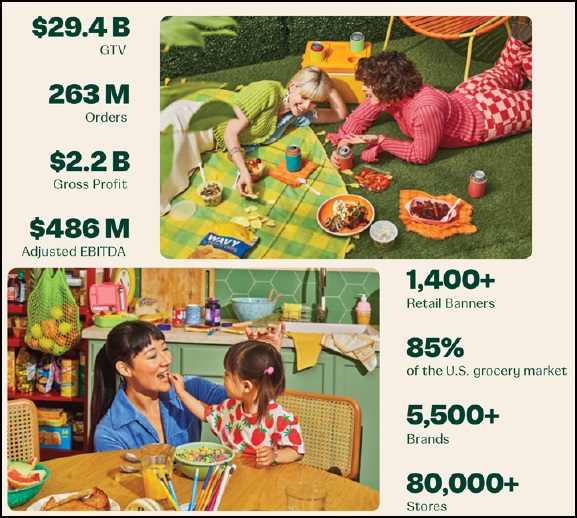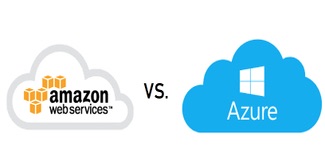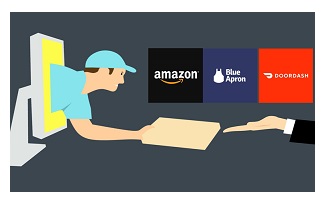 Instacart, a prominent figure in the online grocery delivery landscape, has unveiled its intentions to enter the public market.
Instacart, a prominent figure in the online grocery delivery landscape, has unveiled its intentions to enter the public market.
Revenue Growth Led to Profits in 2022 and Continues This Year
Instacart’s financial health has shown a significant improvement in recent years. Total revenue hit $2.55 billion in 2022 up from $1.83 million in 2021, an increase of 39%. The company reported a profit of $428 million in 2022, up from a net loss of $73 million in 2021.
This profitability was driven by multiple factors, including increased efficiency in its delivery system and a booming advertising business.
So far this year, the company’s revenue grew by 31% to approximately $1.475 billion in the six months ending June 30, 2023, with a net income of $242 million up from a loss of $74 million in the same period last year.
Risks and Challenges
Despite its growth, Instacart faces several challenges. A significant portion of its Gross Transaction Value (GTV) comes from a few major retailers. Any shift in these partnerships could impact Instacart’s revenues.
Additionally, the company faces stiff competition from giants like DoorDash (NYSE: DASH), Uber Eats (NYSE: UBER), Amazon (NASDAQ: AMZN), and Walmart (NYSE: WMT).
The evolving nature of the online grocery market and the potential for key retail partners to develop their delivery services further add to the risks.
Company Outlook and Guidance
Instacart’s future strategy revolves around technology and diversification. The company plans to continue its push into enterprise technology, offering solutions to grocers lacking the resources for a digital transition.
Instacart acknowledges that the growth rates seen during the pandemic might not continue, but its investments in technology and advertising position it well for sustained expansion. The company’s focus on leveraging artificial intelligence and machine learning further underscores its commitment to innovation and growth.
Investor Landscape
Over the years, Instacart has attracted significant investments and has reportedly secured close to $3.2 billion in funding with an accumulated deficit of approximately $735 million. Notable past investors include Andreessen Horowitz, D1 Capital, and Sequoia Capital.
During its financing in December 2022, Instacart notably adjusted its internal valuation to $10 billion, down significantly from its $39 billion valuation the prior year.
As part of the IPO, PepsiCo (NASDAQ: PEP) has committed to a $175 million investment in preferred convertible stock, and Norges Bank Investment Management, Sequoia Capital, and Valiant Capital Management have expressed interest in acquiring up to $400 million worth of shares.
Online Grocery Industry
The grocery business stands as the largest retail category in the US, with a valuation of $1.1 trillion. U.S. online grocery sales are predicted to continue their robust growth over the next five years, even after the pandemic’s peak.
According to a 2023 forecast by advisory firm Brick Meets Click, online grocery sales will account for 13.6% of the total U.S. grocery market by 2027, up from 11.2% in 2022. This represents an annual growth rate of 11.7% for e-grocery sales over five years which could fuel Instacart’s growth.
Instacart, with its dual online and in-store shopping approach, aims to tap into this potential. However, the company faces stiff competition from DoorDash, Uber Eats, Amazon’s grocery delivery service, and Walmart’s e-commerce capabilities.
The evolving dynamics of this industry, coupled with the potential for increased online sales, make it a lucrative yet challenging space.
Instacart’s Position in the Market
Instacart has positioned itself as more than just a delivery service. By offering technological solutions to grocery stores and leveraging vast consumer data, it has expanded its footprint in the online grocery space.
With over 600,000 independent contractors and partnerships with more than 1,400 retailers, Instacart’s reach is extensive. The company’s focus on enhancing the user experience, both online and in-store, sets it apart from competitors.
Final Thoughts
Instacart’s impending IPO is a significant milestone in the online grocery delivery sector. While challenges lie ahead, the company’s strategic investments, focus on technology, and understanding of consumer behavior position it well for future growth.
However, as the industry evolves, Instacart’s adaptability and innovation will be key determinants of its success and profitability.
FIGURE 1: Instacart By-the-Numbers

Notes: All numbers are in USD unless otherwise stated. The author of this report, and employees, consultants, and family of eResearch may own stock positions in companies mentioned in this article and may have been paid by a company mentioned in the article or research report. eResearch offers no representations or warranties that any of the information contained in this article is accurate or complete. Articles on eresearch.com are provided for general informational purposes only and do not constitute financial, investment, tax, legal, or accounting advice nor does it constitute an offer or solicitation to buy or sell any securities referred to. Individual circumstances and current events are critical to sound investment planning; anyone wishing to act on this information should consult with a financial advisor. The article may contain “forward-looking statements” within the meaning of applicable securities legislation. Forward-looking statements are based on the opinions and assumptions of the Company’s management as of the date made. They are inherently susceptible to uncertainty and other factors that could cause actual events/results to differ materially from these forward-looking statements. Additional risks and uncertainties, including those that the Company does not know about now or that it currently deems immaterial, may also adversely affect the Company’s business or any investment therein. Any projections given are principally intended for use as objectives and are not intended, and should not be taken, as assurances that the projected results will be obtained by the Company. The assumptions used may not prove to be accurate and a potential decline in the Company’s financial condition or results of operations may negatively impact the value of its securities. Please read eResearch’s full disclaimer.




